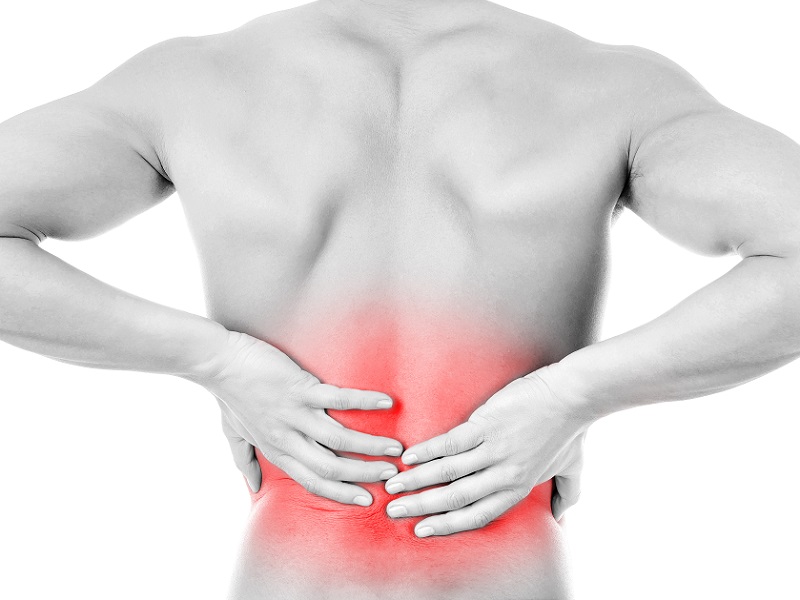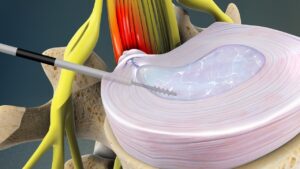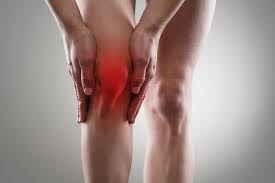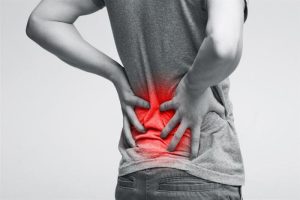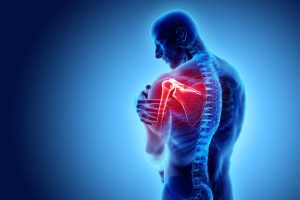With the advancement of modern medicine, it has become possible to treat herniated discs and spinal pain without the need for traditional surgery, using techniques such as vaporization and non-surgical disc suction. These modern interventional techniques have become an ideal option for patients who want to avoid open surgery, reduce recovery time, and minimize potential complications. We’ll explore the most common complications of disc suction surgery.
Professor Dr. Hesham El-Azzazi, a leading specialist in pain management and minimally invasive spine surgery, is a pioneer in the use of these methods in Egypt. With extensive experience in anesthesia and intensive care, Dr. El-Azzazi offers effective and safe solutions for treating herniated discs and spinal stenosis without surgical intervention, using the latest medical technologies.
However, despite the effectiveness and safety of non-surgical cartilage vaporization and suction techniques , it is important to highlight some of the limited complications that may accompany these procedures, emphasizing their rarity and often related to special cases or poor adherence to medical instructions after the procedure.

The nature of the process of vaporizing and suctioning cartilage with laser
Before delving into the potential complications, let’s review the nature of this procedure. Non-surgical disc vaporization and aspiration is a minimally invasive procedure aimed at relieving pressure on the nerves caused by a herniated disc. This is done by inserting a very thin needle containing a tiny laser fiber into the affected disc. The laser energy vaporizes a small portion of the nucleus pulposus (the inner portion of the disc), reducing the disc’s size and relieving pressure on the surrounding nerves. In some cases, mechanical aspiration can be used in conjunction with the laser to enhance this effect. This procedure is typically performed under local anesthesia, reducing the risks associated with general anesthesia and open surgery.
Laser Vaporization and Cartilage Suction Complications: Understanding the Risks
Although laser cartilage vaporization and suction is relatively safe compared to open surgery, like any medical procedure, it carries a range of risks and potential complications. It is very important for patients to be aware of these complications and discuss them with their physician before deciding on treatment. Potential complications include:
Infection:
- Description: Although the procedure is performed under sterile conditions, there is always a small risk of bacteria entering the procedure site and causing infection of the herniated disc (discitis) or surrounding tissue.
- Causes: Infection may occur due to insufficient sterilization, the presence of bacteria on the skin, or a weakened immune system of the patient.
- Symptoms: increasing pain, fever, redness or swelling at the insertion site, tingling or numbness.
- Management: Most infections can be treated with antibiotics, but in severe cases, surgical drainage may be required. Dr. Al-Azzizi is committed to using the highest standards of sterility to minimize this risk.
Bleeding or hematoma formation:
- Description: Minor bleeding may occur at the needle insertion site. In rare cases, a hematoma (collection of blood) may form, which can put pressure on surrounding nerves.
- Causes: Bleeding may occur if a small blood vessel is punctured during the procedure.
- Symptoms: bruising, swelling, increasing pain, and in rare cases, weakness in the extremities if the hematoma is large and presses on nerves.
- Management: Most bleeding is minor and stops spontaneously. Local pressure can be used. In cases of large hematomas, surgical removal may be required.
Nerve or spinal cord damage:
- Description: Despite precise guidance from x-rays or other imaging devices, there is a very small risk of damage to nearby nerves or even the spinal cord itself.
- Causes: This may be due to a misdirection of the needle, or unexpected movement of the patient during the procedure.
- Symptoms: increased pain, numbness, weakness, or loss of sensation in the affected area, or in extreme cases, partial or complete paralysis.
- Management: These complications are very rare thanks to Dr. Al-Azzizi’s extensive experience and use of precise navigation techniques, but if they do occur, they may require additional interventions to treat the damage.
Symptoms worsen or do not improve:
- Description: In some cases, the patient’s symptoms may not improve after the procedure, or in very rare cases, they may worsen.
- Causes: The cause may be insufficient pressure relief on the nerve, another undiagnosed cause of the pain, or damage to the disc that cannot be treated with this method.
- Management: Dr. Al-Azzizi performs a thorough assessment of the patient’s condition prior to the procedure to minimize this risk. If there is no improvement, alternative treatment options will be explored.
Recurrent herniated disc:
- Description: Although the procedure aims to reduce the size of the disc, there is a possibility that the herniated disc will recur in the same location or in another disc in the future.
- Causes: This may be due to a weak original disc, repetitive stress on the spine, or failure to adhere to post-procedure instructions such as physical therapy.
- Management: Dr. Al-Azzizi emphasizes the importance of rehabilitation and physical therapy programs to strengthen muscles and reduce the risk of recurrence.
Disc damage:
- Description: Laser may cause excessive damage or weakening of the herniated disc if excessive or incorrect energy is used, which may worsen the disc problem in the long term.
- Causes: Incorrect use of the laser device or incorrect assessment of the disc condition.
- Management: Dr. Al-Azzizi relies on his extensive experience and standardized protocols for using lasers with the utmost safety to minimize this risk.
Allergic reaction:
- Description: Allergic reaction to medications used during the procedure (such as local anesthetic or dyes used for guidance).
- Causes: Patient’s sensitivity to certain components.
- Symptoms: rash, itching, swelling, difficulty breathing, or low blood pressure.
- Management: A detailed medical history is taken prior to the procedure to detect any known allergies. Emergency equipment is available to handle immediate allergic reactions.
Side effects associated with local anesthesia:
- Description: Although local anesthesia is generally safe, it may cause some side effects such as dizziness, nausea, or temporary low blood pressure.
- Management: The patient’s vital signs are continuously monitored during the procedure to ensure their safety.
Modern solution: Vaporization and suction of cartilage without surgery
Thanks to medical advances and minimally invasive techniques, safer and more effective methods have emerged for treating herniated discs, including non-surgical disc vaporization and suction , a technique that Professor Dr. Hesham Al-Azzizi performs with great skill in his various clinics.
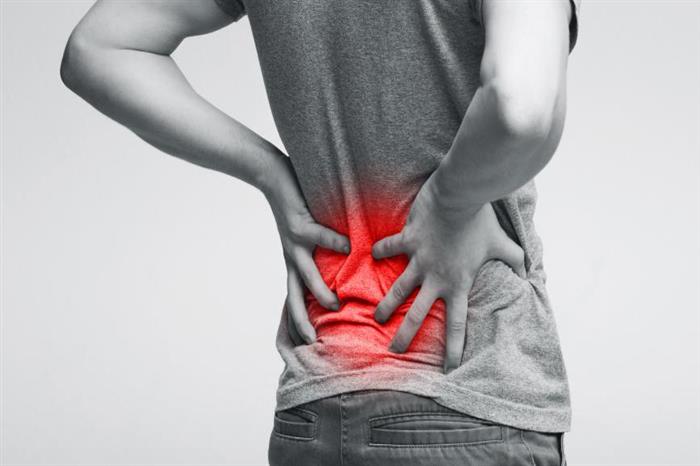
What is cartilage evaporation?
Disc vaporization is a non-surgical procedure that involves inserting a very thin needle through the skin into the herniated disc under X-ray guidance. A laser or radiofrequency is then used to vaporize part of the enlarged disc that is pressing on the nerve, relieving pain and returning the patient to normal life within a few days.
It is a minimally invasive procedure in which laser beams are used to vaporize a very small portion of the nucleus of the herniated disc (the soft inner part of the disc), resulting in:
- Reducing the size of the swollen cartilage.
- Relieve pressure on adjacent nerves.
- Reduce pain and improve patient mobility.
The role of Professor Dr. Hisham Al-Azzizi
Choosing a skilled and experienced physician plays a crucial role in minimizing the risks of any medical procedure. Professor Dr. Hesham El-Azzizi and his team adhere to the highest standards of safety and quality to ensure the utmost safety for their patients:
- Comprehensive Pre-Procedure Evaluation: Dr. Al-Azzizi performs a thorough and comprehensive evaluation of each patient’s condition, including medical history, physical examination, and imaging findings (usually MRI). This evaluation helps determine whether the patient is a good candidate for the procedure and allows for the development of a personalized treatment plan.
- Precise image guidance: Dr. Al-Azzizi uses the latest imaging techniques (such as fluoroscopy) to precisely guide the needle and laser to the affected disc, minimizing the risk of damage to surrounding structures.
- Strict Sterilization: The strictest levels of sterilization are adhered to in all clinic branches to reduce the risk of infection.
- Experience and Skill: Dr. Al-Azzizi’s extensive years of experience in pain management and interventional medicine ensures that the procedure is performed with the highest level of efficiency and skill.
- Regular follow-up: Post-procedure follow-up is an integral part of the treatment plan, during which the patient’s response is evaluated and any potential complications are monitored.
- Clear Post-Procedure Instructions: Dr. Al-Azzizi provides his patients with detailed instructions on how to care for themselves after the procedure, including rest, permitted activities, and necessary medications, to ensure proper recovery and reduce the risk of complications.
In conclusion, non-surgical disc vaporization and suction techniques remain a revolutionary and safe option for treating spinal problems without resorting to a scalpel, especially under the supervision of experts like Professor Dr. Hesham El-Azzizi, who has a comprehensive vision for treating pain using precise and effective interventional methods. Although complications resulting from these procedures are rare, accurate diagnosis, appropriate patient selection, and follow-up with a specialist are key factors for the procedure’s success.
Non-surgical disc vaporization and suction is an advanced technique that offers significant benefits to patients with herniated discs, including reduced pain, a shorter recovery period, and avoiding open surgery. Although potential complications exist, these are generally rare, and the risk can be significantly reduced when the procedure is performed by an experienced and highly skilled physician like Professor Hisham Al-Azzizi.
Making a treatment decision requires an open and honest discussion between the patient and physician about the expected benefits, potential risks, and alternative treatment options. Dr. Al-Azzizi is committed to providing this information with complete transparency, enabling his patients to make informed decisions about their health.
The most common questions about the complications of cartilage suction surgery
Disc aspiration is performed using a minimally invasive technique. It does not require a large incision and is usually performed under local anesthesia, unlike traditional surgery, which may require a large opening and a longer recovery period.
In some cases, pain may return if rehabilitation therapy is not adhered to or if more than one slipped disc is present.
The success rate ranges between 80–95%, especially when the appropriate case is chosen and the procedure is performed correctly.
Most patients can return to their normal lives within days to a week, provided they follow their doctor's instructions. Most patients can return to their normal lives within days to a week, provided they follow their doctor's instructions. What is the difference between disc aspiration and traditional surgery?
Is there a possibility of pain returning after disc aspiration?
What is the success rate of the procedure?
How long does the recovery period take after disc aspiration?
